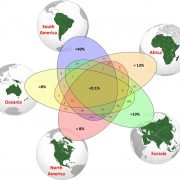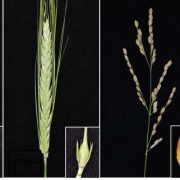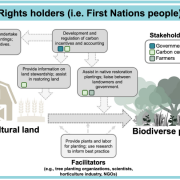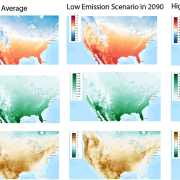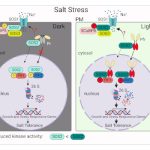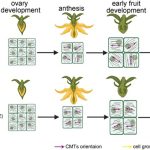Putting conservation gardening on the map
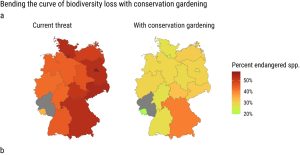 We’re living in a time of increasing awareness of environmental degradation, but this awareness is often not accompanied by opportunities for direct actions. Here, Munschek et al. describe conservation gardening (growing endangered native plants) as a strategy by which people can support local biodiversity. As the authors point out, native plants often require less water and fertilizer than conventional garden plants, can provide better opportunities for pollinators, and have “substantial potential to catalyze transformative change in bending the curve of biodiversity loss”. To move people from wanting to do something to doing something, information and access are needed, which is why this is such an innovative project. Focusing on Germany as a case study, the authors looked at all plants on the red list per federal state, identified those that could be amenable to cultivation in private or community spaces (gardens, parks, even balconies), and listed them alongside their site requirements and how to find seeds or seedlings in an easy-to-use database (https://conservation-gardening.shinyapps.io/app-en/). What a brilliant plan. And as the authors say, the more demand there is for gardening with native, endangered species, the more likely that suppliers will supply these plants. Providing people with a simple and direct action isn’t going to solve the biodiversity crisis, but it can have an impact, and, more importantly, provide some hope to these sometimes hopeless-feeling times. (Summary by Mary Williams @PlantTeaching) Sci. Rep. 10.1038/s41598-023-39432-8
We’re living in a time of increasing awareness of environmental degradation, but this awareness is often not accompanied by opportunities for direct actions. Here, Munschek et al. describe conservation gardening (growing endangered native plants) as a strategy by which people can support local biodiversity. As the authors point out, native plants often require less water and fertilizer than conventional garden plants, can provide better opportunities for pollinators, and have “substantial potential to catalyze transformative change in bending the curve of biodiversity loss”. To move people from wanting to do something to doing something, information and access are needed, which is why this is such an innovative project. Focusing on Germany as a case study, the authors looked at all plants on the red list per federal state, identified those that could be amenable to cultivation in private or community spaces (gardens, parks, even balconies), and listed them alongside their site requirements and how to find seeds or seedlings in an easy-to-use database (https://conservation-gardening.shinyapps.io/app-en/). What a brilliant plan. And as the authors say, the more demand there is for gardening with native, endangered species, the more likely that suppliers will supply these plants. Providing people with a simple and direct action isn’t going to solve the biodiversity crisis, but it can have an impact, and, more importantly, provide some hope to these sometimes hopeless-feeling times. (Summary by Mary Williams @PlantTeaching) Sci. Rep. 10.1038/s41598-023-39432-8


